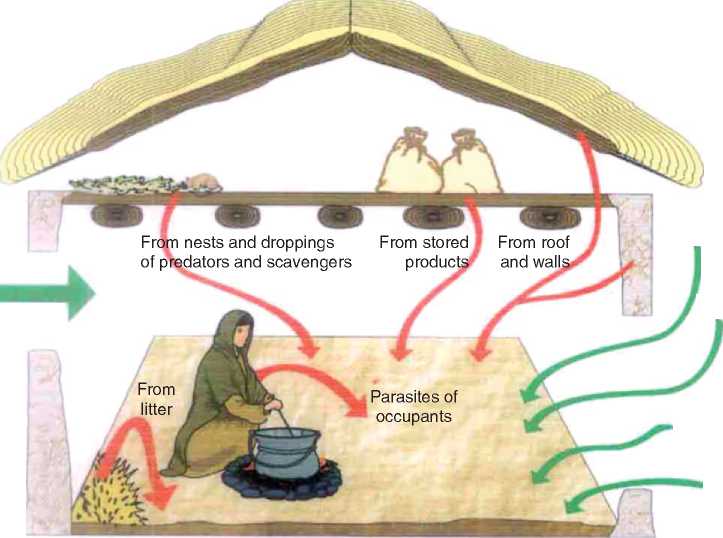The ecological sensitivity of insects makes them useful indicators of past environments, both natural and anthropogenic. Most European archaeological sites contain a mixture of synanthropic (human-associated) and nonsynanthropic insect remains. It is often difficult to make clear separations between these two components. In 1985 Kenward studied indoor and outdoor insect taxa found in modern buildings which helped to define potential sources of insects deposited in ancient dwellings (Figure 1).
Insect remains can provide a wealth of archaeological detail and may yield information on human activities and environmental conditions not brought out by other types of data. Stored product pests, as well as scavengers and plant feeders, document food
Migrating insects

Insects seeking habitation sites
In imported material, casual transport, or on occupants
- Crawling
Figure 1 Cutaway section of a medieval house, showing potential sources of insect remains. Red arrows indicate household insects; green arrows indicate external insects. SA Elias (1994) Quaternary Insects and Their Environments. Washington, DC: Smithsonian Institution Press.
Accidental entry in local flight
Storage and use patterns, food types, building methods, and other details of domestic life, farming, and animal husbandry. Human parasites and synanthropes offer evidence of sanitation conditions, health, crowding, and human dispersal patterns. Carrion beetles, flies, and other insects provide forensic data on human and animal corpses.




 World History
World History









